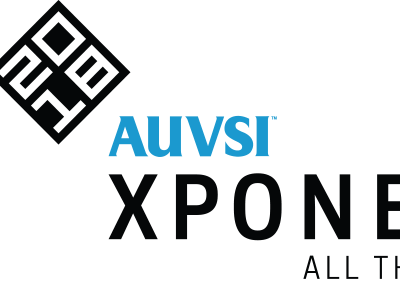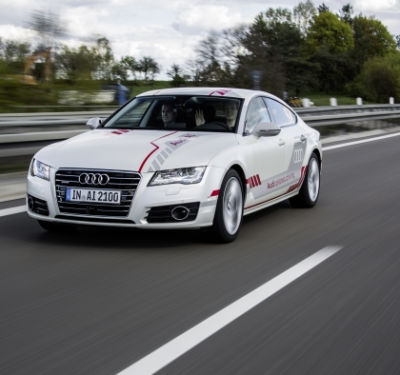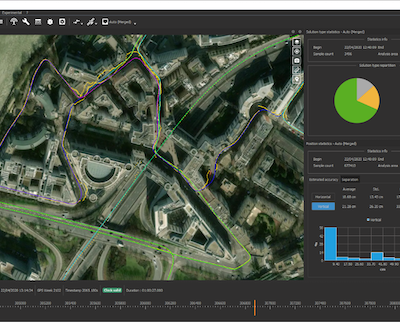Concepts to know intimately in any autonomous automotive application: lane level, antenna phase center offset and phase center variation.
“A stable phase center offset is important because, for high-accuracy and high-integrity applications, the careful characterization of each ranging error source is important,” says Kaz Gunning, researcher in the GPS Laboratory at Stanford University, and a speaker on the upcoming free webinar on December 18. “The assumption of a stable antenna phase center offset when it is not could lead to poorer carrier-phase ambiguity estimates and/or protection level violations.”
The phase center of the antenna is the point where the signals transmitted from satellites are collected. When a receiver reports a location fix, that location is essentially the phase center of the antenna.
Standard road lane width in North America is approximately 3.6 meters, requiring an unbiased precise positioning solution of significantly less than 1.8 meters. Using a safety margin of 50% means that unbiased precise positioning of less than 0.9 m is required. Not only are technologies beyond standard GPS positioning needed, each aspect of the operation must be very finely tuned to get every bit of available accuracy, and not introduce any avoidable error. Thus the critical importance of antenna phase center offset and phase center variation. These dimensions, if not properly calculated, can introduce errors to the positioning solution..
The Stanford GPS Lab has specialized for decades in accuracy and integrity — the reliability of the positioning solution, which can be as important as the solution itself — for airplane operations. It is now applying many of these hard-won concepts to the developing field of driverless cars.
What lessons can be learned from integrity in the aviation sector, as applied to automotive?
Kaz Gunning: The aviation community carefully determines its requirements for accuracy, integrity, continuity, and availability and uses these to evaluate performance against anticipated threats under all acceptable operational conditions. The automotive industry is working to develop a commonly agreed upon set of requirements. It also operates in very challenging environments that may contain very large multipath and blocked signals. These threats need to be evaluated and appropriate mitigations must be put in place. Many of the analytical techniques used to determine protection levels and evaluate integrity derived for aviation can be applied to the automotive settings.
_____________
With key antenna specifications for automotive and autonomous use as a point of departure, three expert panelists will bring their varied perspectives to the challenges of road application.
REGISTER HERE
Takeaways from the December 18 webinar
Here’s what you need to consider — and what the webinar explains in detail — to use multi-constellation, multi-frequency GNSS chipsets, with the new signals at L5, to provide safe and assured lane-level positioning:
- New patch or helix antenna technology that covers multiple frequencies
- The stability of the frequency response in those bands
- Ground planes for the antennas to ensure the antenna can cover the large frequency range
- Multipath effects
- Doing all of this to automotive standards, in high volume, for low cost.
Expert Panel
These engineers understand the entire signal chain from antenna to receiver to protection limits, and how everything works together.
 Kevin Doherty is team lead, technical sales for NovAtel and Hexagon Positioning Intelligence. With the company since 2013, he maintains close contact with the Applications Engineering subdivision, where he previously worked as automotive and safety critical systems team lead. He has deep knowledge of the SPAN Ground Truth Reference Systems and Autonomous Driving including use of correction services, sensor fusion, and positioning for absolute vehicle localization. He has extensive experience and international travel assisting customers in vehicle-to-vehicle (V2V), vehicle-to-infrastructure (V2X), and various advanced driver assistance systems (ADAS) applications. He holds a B.Sc. in geomatics engineering from the University of Calgary, with a technology stream focus: navigation, GIS, photogrammetry and programming.
Kevin Doherty is team lead, technical sales for NovAtel and Hexagon Positioning Intelligence. With the company since 2013, he maintains close contact with the Applications Engineering subdivision, where he previously worked as automotive and safety critical systems team lead. He has deep knowledge of the SPAN Ground Truth Reference Systems and Autonomous Driving including use of correction services, sensor fusion, and positioning for absolute vehicle localization. He has extensive experience and international travel assisting customers in vehicle-to-vehicle (V2V), vehicle-to-infrastructure (V2X), and various advanced driver assistance systems (ADAS) applications. He holds a B.Sc. in geomatics engineering from the University of Calgary, with a technology stream focus: navigation, GIS, photogrammetry and programming.
 Curtis Hay is a Technical Fellow at General Motors. In this role he develops precise GNSS, vehicle-to-vehicle, and map technologies to enable safe and reliable operation of automated vehicles. Curtis also led the team responsible for launching GM’s 4G LTE connectivity in North America, Europe and China. Prior to joining General Motors, Curtis served as an officer in the US Air Force for eight years where he developed GPS technology for precision weapons, performed satellite launch planning, and managed the GPS Accuracy Improvement Initiative. Curtis also developed precision GPS equipment to automate farm and construction vehicles while at John Deere He has delivered papers and speeches at several international conferences, and previously appeared on a 2018 Inside GNSS webinar panel, “Beyond GNSS: Testing Solutions for Autonomous Vehicles and Robotics.”
Curtis Hay is a Technical Fellow at General Motors. In this role he develops precise GNSS, vehicle-to-vehicle, and map technologies to enable safe and reliable operation of automated vehicles. Curtis also led the team responsible for launching GM’s 4G LTE connectivity in North America, Europe and China. Prior to joining General Motors, Curtis served as an officer in the US Air Force for eight years where he developed GPS technology for precision weapons, performed satellite launch planning, and managed the GPS Accuracy Improvement Initiative. Curtis also developed precision GPS equipment to automate farm and construction vehicles while at John Deere He has delivered papers and speeches at several international conferences, and previously appeared on a 2018 Inside GNSS webinar panel, “Beyond GNSS: Testing Solutions for Autonomous Vehicles and Robotics.”
Kaz Gunning is a Ph.D. candidate in the GPS Research Laboratory of the Department of Aeronautics and Astronautics at Stanford University. Prior to joining the Lab in 2015, he worked for Booz Allen Hamilton in the GPS Systems Engineering and Integration group, doing modeling and simulation of the next-generation GPS Control Segment and software-defined receiver work, looking at the GPS III waveform. He has a B.S. and an M.S. from Stanford. He presented a paper on his recent research at the ION GNSS+ 2019 conference, “Integrity for Tightly Coupled PPP and IMU,” leading to improved solutions and protection-level continuity.
Department of Aeronautics and Astronautics at Stanford University. Prior to joining the Lab in 2015, he worked for Booz Allen Hamilton in the GPS Systems Engineering and Integration group, doing modeling and simulation of the next-generation GPS Control Segment and software-defined receiver work, looking at the GPS III waveform. He has a B.S. and an M.S. from Stanford. He presented a paper on his recent research at the ION GNSS+ 2019 conference, “Integrity for Tightly Coupled PPP and IMU,” leading to improved solutions and protection-level continuity.






